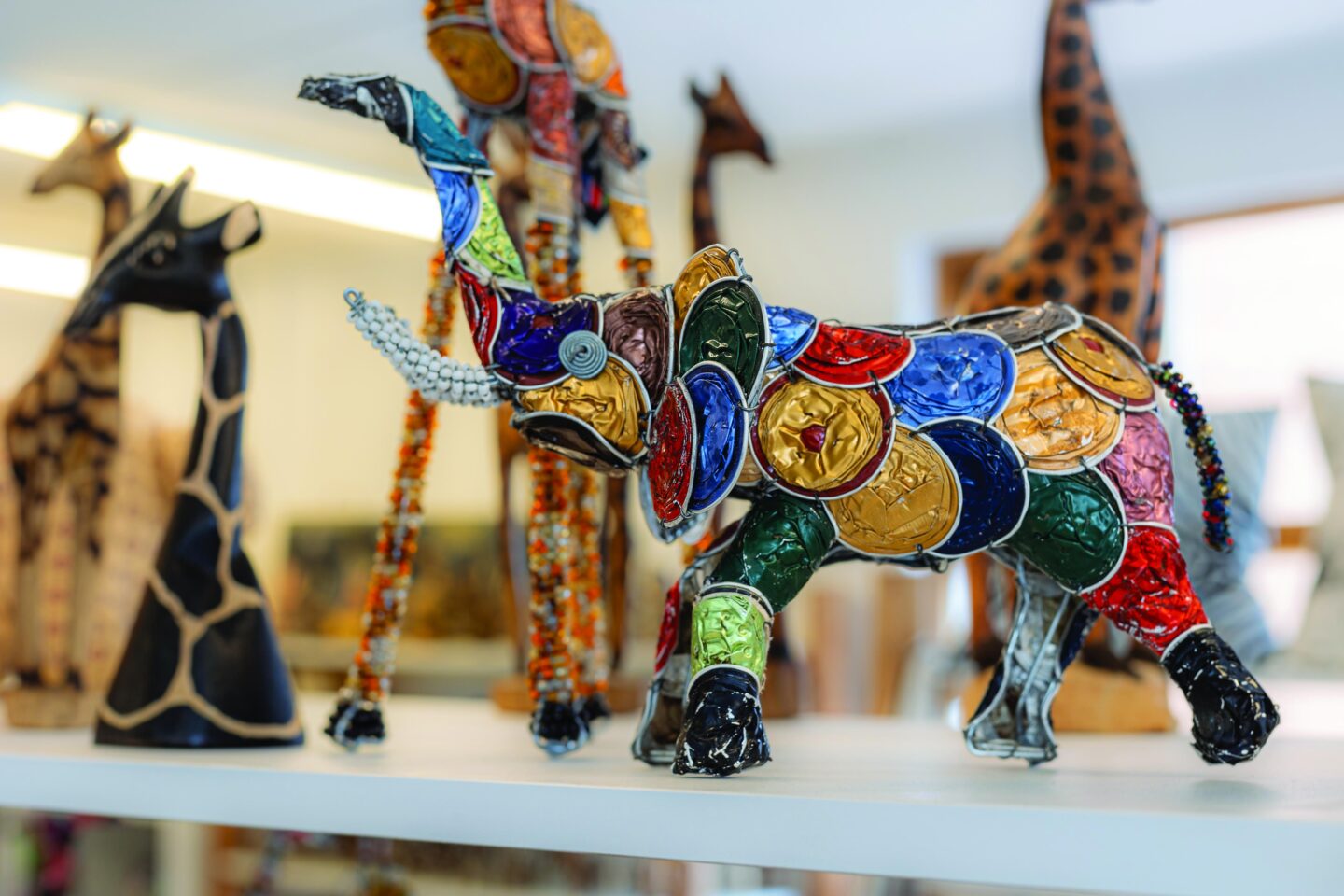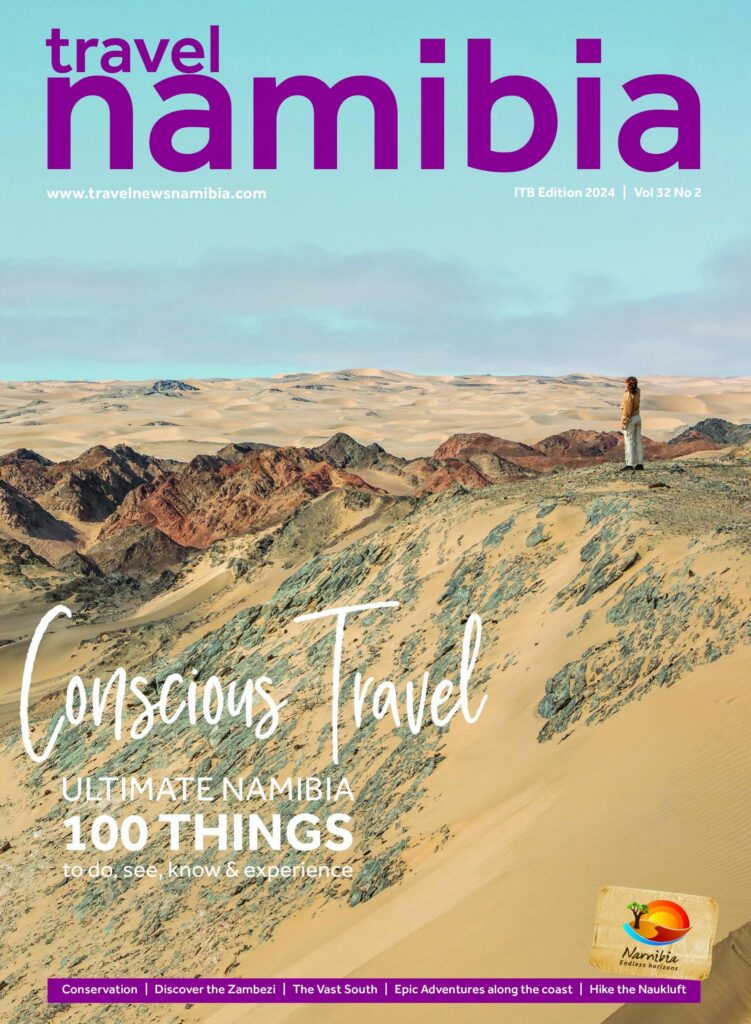
An innovative hub for Namibian crafters, artists and innovators – a platform for their work to reach potential buyers – can be found in the coastal town of Swakopmund. The Made in Namibia Collection hosts a variety of locally made products from all over the country. As a collective, it provides a home for small-scale artists and entrepreneurs to sell their work. The range includes established and well-known Namibian brands as well as products by individuals from different ethnic backgrounds simply looking to feed their family with their craft.
The Made in Namibia Collection story, as well as the stories of the various artists being uplifted through this collective, is inspirational. A visit to their concept store in Swakopmund is a feast for the eyes, and listening to the inspirational stories of artists supporting themselves and their communities through their unique talents is a heart-warming experience.
The concept was born when a husband-and-wife duo, Raymond and Marilyn Spall, decided to focus on supplying a small range of Namibian-manufactured gifts eight years ago. They did not know that one day their idea would become a platform making a difference in the lives of many artists and artisans. Raymond says, “Our goal has always been to increase the exposure and nationwide platform for all our local suppliers to benefit from and, as a preferred supplier to Namibia Wildlife Resorts, this foundation has major advantages for all our suppliers, especially once their products become popular.”
“We are a truly Support Namibian concept and it’s when you talk to our subsistence suppliers directly that you fully comprehend how this platform has made significant changes to their livelihood. We opened our first retail shop in March 2018 and we were able to gauge which products were popular. From here we have been slowly introducing these items to our wholesale customer base and as a result we are finally experiencing exponential growth,” explains Raymond.
Jacky Haslund is the manager at The Made in Namibia Collection store found at Ankerplatz in Swakopmund. She says, “If you look around our shop you will see photos all over the walls. These are the different crafters we work with. We have people supplying us from the Zambezi in the north to Keetmanshoop in the south. It is a place where we try to create a platform for local crafters to showcase their products.”
Jacky goes on to explain, “For some crafters it would be hard to be on their own but here it is a whole collection of locally made products and this makes it easier for the local crafters to get their products out there.”
An example of this is seen in the story of Caroline Tjambiru, who has been supplying her Himba leather jewellery products to The Made in Namibia Collection for approximately five years. With little to no cellular phone reception where she lives, she makes regular trips to Swakopmund to bring newly made items for selling. She says, “I am self-employed, and all my products are handmade. When you buy my products you are supporting me and my children.”
Jacky goes on to explain, “We have traditional crafters, but we also have a lot of people recycling and upcycling products. For example, earrings that are made from used coffee pods and animals made from cooldrink cans. Of course we also support conventional artists who make beautiful paintings, like Ronald.”
Ronald Kharuxab has been part of The Made in Namibia Collection for more than five years. He explains that he is a “self-taught visual artist,” adding, “I do a variety of products, from fridge magnets to hand-painted T-shirts and paintings. My products are based on Namibian landscapes, the culture and the people of Namibia. I depend on The Made in Namibia Collection because through supplying them I am able to provide for my family.”
Jacky, evidently passionate about the artists and crafters supported by the collection, explains, “If we support local, local can grow. In the shop we have a large variety of amazing Namibian products – so many things that are made locally. We have spices, sauces, coffee, olives, olive oil and more. We even have a lady making body products from seaweed.”
That lady is Karina Pell from Essence Organic Seaweed Skincare, who explains that seaweed absorbs a dense concentration of minerals directly from the seawater along with proteins, vitamins, amino acids and lipids which are all extremely good for the skin. “Essence’s seaweed is sustainably harvested by hand, so it can grow back and no plants are harmed or damaged. This ‘clean beauty from the sea’ is produced using natural ingredients such as organic Namibian seaweed, active botanicals and essential oils.”
Karina makes special mention of the founding member of the collection: “Raymond has many years of experience in the industry, bridging the gap between Namibian artisans and retailers, specifically in the tourism industry. Namibia has many talented artisans who make beautiful products but cannot afford shop rentals. The Made in Namibia Collection makes this possible for us.”
Within the collection you will also find more established products such as the Desert Secrets body care range, which was one of the first Namibian products to join the collective eight years ago.
Desert Secrets’ Sophia Snyman explains, “Our body care products are handmade with heart and soul in Namibia, using natural ingredients discovered and carefully selected over time. Timeless, with an ancient wisdom that has taken aeons to form under the vast blue and starlit sky, they hold a magic that you find only in the rare and special places of the Earth.”
Sophia goes on to reiterate the sentiments of the other artisans in their appreciation of the value offered to them by The Made in Namibia Collection. “Especially during Covid, we realised the importance of supporting each other locally. Raymond made a huge effort to promote Made in Namibia products. He created valuable awareness which not only contributed to the survival of my business during this difficult time but also created opportunities to grow when the situation normalised,” says Sophia.
The Made in Namibia Collective highlights the effectiveness of the value of unity in the lives of these artists and artisans. Karina from Essence sums it up beautifully with a quote by Ryunosuke Satoro: “Individually we are a drop. Together we are an ocean.” TNN
More to explore

Discover Airlines launches a new direct flight between Windhoek and Munich







